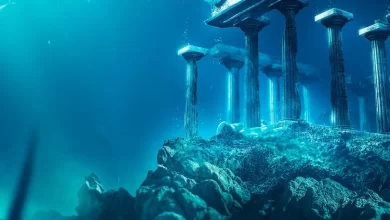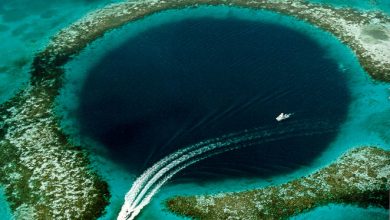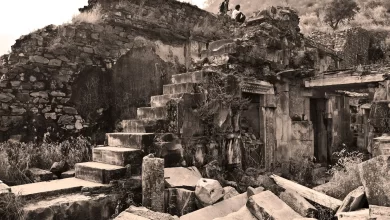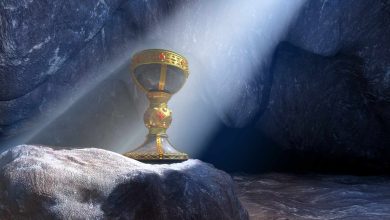The Heikegani, also known as the Heike crab or samurai crab, is a species of crab native to Japan with a fascinating legend woven into its existence. These crabs, with their distinctive markings that resemble human faces, are believed to be haunted by the souls of fallen Heike warriors.
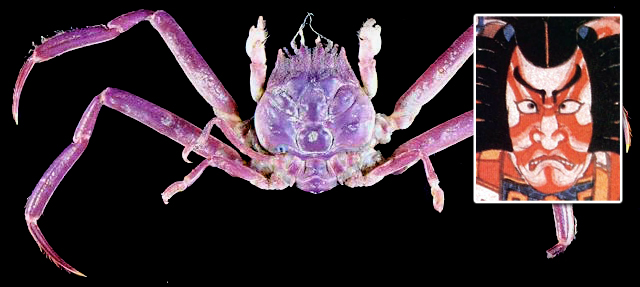
The Battle of Dan-no-ura and the Birth of the Legend:
In 1185 AD, a fierce battle raged in the waters of Dan-no-ura, marking the climax of the Genpei War, a power struggle between the Taira (Heike) and Minamoto clans for control of Japan. The Taira, led by the young Emperor Antoku, faced a decisive defeat, and many warriors, including the Emperor himself, chose death over surrender. Their bodies were lost to the depths of the sea.
The legend of the Heikegani emerges from this historical event. It is said that the vengeful spirits of the fallen Heike warriors found refuge in the bodies of crabs, forever bound to the ocean where they met their demise.
The Face of a Warrior:
The Heikegani is distinguished by the markings on its shell, which remarkably resemble a human face. The two frontal lobes are said to be the eyes, while the carapace forms the nose and mouth. This uncanny resemblance fuels the belief that these crabs carry the visages of the Heike warriors, forever trapped in their crustacean shells.
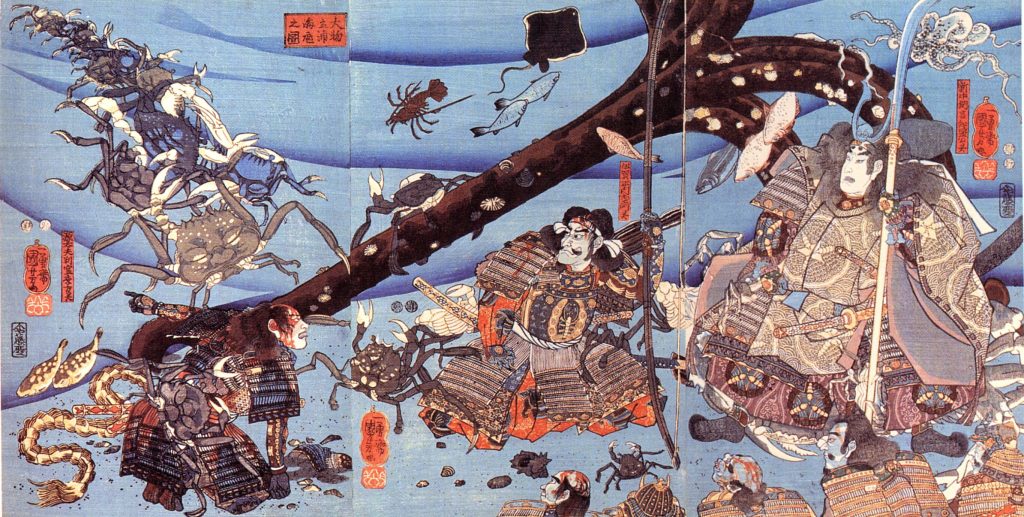
Folktales and Cultural Significance:
The legend of the Heikegani has been captivating audiences for centuries. It has been recounted in folktales, poems, and even kabuki plays. The crab serves as a reminder of the fleeting nature of life and the lingering power of unresolved conflict.
The Heikegani holds a unique place in Japanese culture. It is sometimes seen as a symbol of the fragility of life and the inevitability of death. However, it also represents the indomitable spirit of the Heike warriors, whose sacrifice is said to continue to resonate through the tides.
Scientific Perspective:
While the legend of the Heikegani is captivating, it is important to acknowledge the scientific perspective. The facial markings on the crab’s shell are a natural phenomenon called pareidolia, a tendency of the human brain to perceive familiar patterns in random stimuli.
However, regardless of the scientific explanation, the legend of the Heikegani continues to hold a special place in Japanese hearts. It serves as a reminder of the past, a cautionary tale of war and its consequences, and a testament to the enduring power of storytelling.
Visiting the Heikegani:
If you find yourself in Japan, you can encounter the Heikegani firsthand. Several aquariums across the country house these crabs, offering visitors a chance to see their unique markings and connect with a piece of Japanese folklore.
Conclusion:
The legend of the Heikegani is a captivating blend of history, myth, and folklore. It reminds us of the power of storytelling to shape our understanding of the world and the enduring impact of historical events. So, the next time you encounter a Heikegani, remember the story of the fallen samurai warriors whose spirits are said to reside within its shell.
